Yesterday, we started talking about haunted houses, about the kind of moods they create in us, and the different kinds of haunted houses that are to be found in literature. Our exploration started with the irregular, or the illogical houses–the kind that seem to grow or change…the kind that seem to be reacting to their occupants throughout the course of the story.
The second kind of house is the rational one. These houses conform to all the laws of physics, and look the same on the inside and the outside, regardless of where you are standing. What marks these houses is the evil that lives within them.
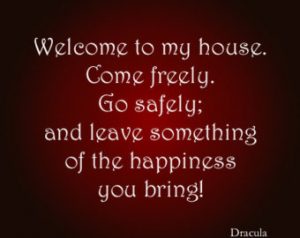
These kinds of houses are alive, just as the irregular ones are. But, rather than playing with their occupants, they just outright hate them. These houses are malevolent, and they tend to attract malevolent people, actions, or events to them–Stephen King called it a “dry charge for evil”. Even if you know these houses inside and out, even if you know where all the doors and windows might be, this kind of house is still a source of terror. Indeed, it’s precisely the fact that you do know the house so well that they are scary.
Because there are always questions–why someone did what they did in that house. What drove them to madness. When they will reappear….and will you be able to bear it?
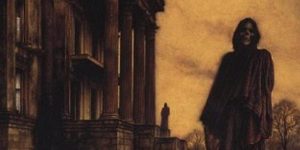
It’s tricky to get these kind of houses right. They often rely on terror, rather than horror, meaning that they act on characters, rather than act themselves–people living in them get nightmares, like in Hell House, or they hallucinate (or do they?!), as happens in Hill House. Other times, characters have evil visited upon them, as happens in the Marsden House, or the house on Neibolt Street.
There aren’t many technicolor effects in these houses–no growing hallways or moving rooms. Instead, these houses rely on the threat implicit in a slammed door…or a creaking floor board….the kind of things that under normal circumstances wouldn’t be at all scary. But in these circumstances, in this place, with this history, it is absolutely terrifying.
Want to experience some of these houses for yourself? Why not take a visit to some of the most ghastly houses in literature for this year’s All Hallows Read?
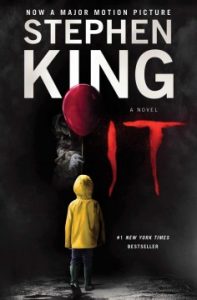 It: Stephen King is not only a prolific author, and a favorite here at the Free For All–he’s also crafts some of the best haunted houses around. If you saw this summer’s blockbuster hit It, you’ll know a bit about the house on Niebolt Street, but, as per usual, the book does it better. The house at 29 Niebolt Street is Pennywise’s liar, and the entire building reeks of his malevolence, but nevertheless, the Losers, the young children brave enough to face down this evil clown, forge their way in. 27 years later, they return to Derry, Maine, to face the evil again. Stephen King does a brilliant job discussing issues of trauma and memory, nostalgia and horror in this epic story, making it one you won’t want to put down, and will be eager to read again and again.
It: Stephen King is not only a prolific author, and a favorite here at the Free For All–he’s also crafts some of the best haunted houses around. If you saw this summer’s blockbuster hit It, you’ll know a bit about the house on Niebolt Street, but, as per usual, the book does it better. The house at 29 Niebolt Street is Pennywise’s liar, and the entire building reeks of his malevolence, but nevertheless, the Losers, the young children brave enough to face down this evil clown, forge their way in. 27 years later, they return to Derry, Maine, to face the evil again. Stephen King does a brilliant job discussing issues of trauma and memory, nostalgia and horror in this epic story, making it one you won’t want to put down, and will be eager to read again and again.
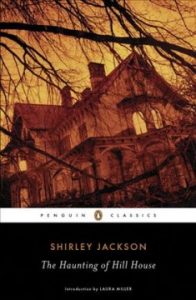 The Haunting of Hill House: Shirley Jackson’s haunted house is a bit of a puzzler. We’re not told specifically what is wrong with the house. But we are told that it’s not sane. But how much of what happens in the course of this story is a result of the house’s inherent insanity, and how much is due to the instability of Eleanor Vance, the main character of this novel, and one of a small group of people invited to stay inside Hill House and witness its strangeness? We aren’t given any answers–at sometimes, the narrative itself seems to defy logic. But it’s that instability and inscrutability that makes this story so affecting.
The Haunting of Hill House: Shirley Jackson’s haunted house is a bit of a puzzler. We’re not told specifically what is wrong with the house. But we are told that it’s not sane. But how much of what happens in the course of this story is a result of the house’s inherent insanity, and how much is due to the instability of Eleanor Vance, the main character of this novel, and one of a small group of people invited to stay inside Hill House and witness its strangeness? We aren’t given any answers–at sometimes, the narrative itself seems to defy logic. But it’s that instability and inscrutability that makes this story so affecting.
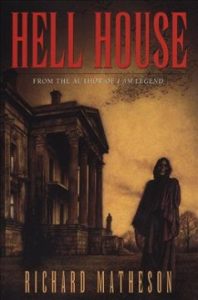 Hell House: If you want to meet the embodiment of Cold War, mid-century despair, look no further than Richard Matheson. His writing is stunning, but it’s also brutal, unsettling, and challenging on a number of levels. In this story, a group of paranormal researchers take a visit to a house that is known to have killed inhabitants before–in fact, they are taking a survivor of the house, who escaped as a child, back, to see what it will do to him as an adult. The Belasco House seeps inside the mind of those who live there, making them confront the very worst of their own natures. As a result, there is a lot that is off-putting about this story, but there is also a lot of insight into the human mind and the limits of each character, making it a really interesting addition to this list.
Hell House: If you want to meet the embodiment of Cold War, mid-century despair, look no further than Richard Matheson. His writing is stunning, but it’s also brutal, unsettling, and challenging on a number of levels. In this story, a group of paranormal researchers take a visit to a house that is known to have killed inhabitants before–in fact, they are taking a survivor of the house, who escaped as a child, back, to see what it will do to him as an adult. The Belasco House seeps inside the mind of those who live there, making them confront the very worst of their own natures. As a result, there is a lot that is off-putting about this story, but there is also a lot of insight into the human mind and the limits of each character, making it a really interesting addition to this list.
Happy reading, beloved patrons….and don’t mind that noise on the stairs…..
